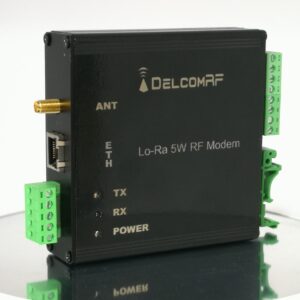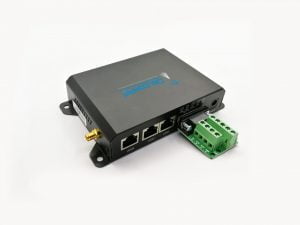FAST COMMUNICATION BETWEEN AUTOMATION AND INDUSTRIAL DEVICES: MODBUS
Modbus is a serial communication protocol developed by Modicon, published by Modicon® in 1979 for use with programmable logic controllers (PLCs). In simple words, it is a method used to transmit information over serial lines between electronic devices. The device requesting information is called the Modbus Master and the devices that provide information are called Modbus Slaves. In a standard Modbus internet network, there can be a Master and up to 247 Slaves, each with 1 to 247 different Slave Addresses. The master can also send information to the Slaves.
The main purpose of the protocol is to facilitate reliable, fast communication between automation and field devices.

Advantage: MODBUS is a seamless protocol that provides extremely fast ETHERNET data transmission. The manufacturer-independent data structure also allows communication between devices from different manufacturers.
MODBUS allows the connection of a master (eg PC) and several slaves (eg measurement and control systems). It is available in two versions: one for serial interface (RS-232 and RS-485) and one for ETHERNET.
It is divided into the following data transmission operating modes:
MODBUS TCP: ETHERNET TCP / IP communication based on client / server model
MODBUS RTU: Asynchronous, serial transmission over RS-232 and RS-485
MODBUS ASCII: It is similar to RTU protocol except for different data format; relatively rarely used.
MODBUS TCP / IP
MODBUS TCP establishes client / server communication. The only requirement is that the nodes are in the same IP address range.
An additional setting is made via the device addresses; however, this cannot be done manually on each manufacturer’s products. For example, you can use the device address to reach the MODBUS RTU node connected to the gateway via the MODBUS-TCP-MODBUS-RTU gateway by addressing the IP address of the next.
Modbus RTU
MODBUS RTU establishes a serial master / slave communication via RS-232 or RS-485. In order to address the MODBUS RTU, the serial communication parameters must first be known and / or defined. These parameters include baud rate, parity, and stop bits. The slave address (s) to be addressed by the master are also activated. In this case, the cable length with RS-232 is limited to 15 m and with RS-485 to 1200 m.
Modbus ASCII
It is based on the communication of data in the Modbus network structure using 8-bit coding according to the ASCII coding system. The advantage of this encoding allows consecutive data to be transmitted without causing an error. Using the LRC error check, it is checked whether more than 8 bits of data are sent.
Most of DelcomRF products support MODBUS protocol.
Click to review and buy our products.





